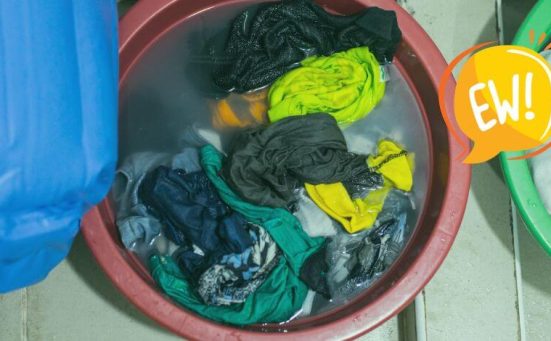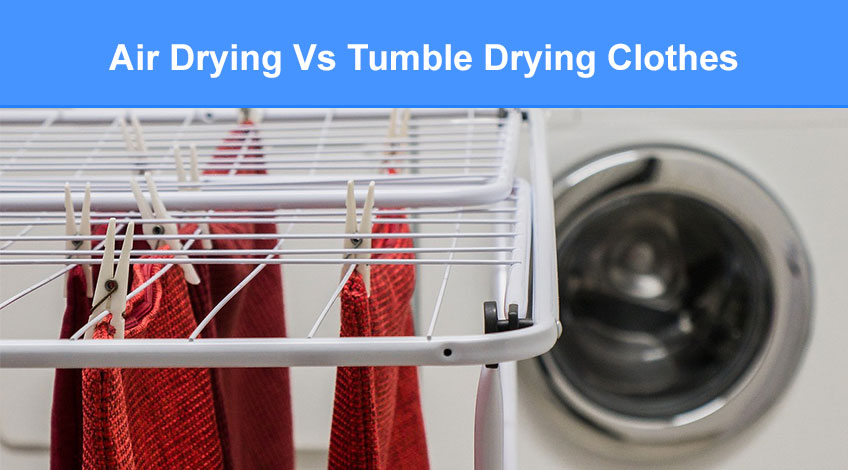
Air Drying Vs Tumble Drying Clothes: which is better?
Getting laundry dry is all about personal choice, and in this article we look at the positives and negatives of air drying vs tumble drying clothes so you can decide which is better.
When you have a huge pile of freshly washed clothes that need drying, you’re faced with two choices; Tumble drying or air drying. Which choice you make probably depends on how you were brought up and which part of the country you live in. Traditions are great, but are they the best way to get your laundry dry?
Keep reading our unbiased report and by the end, you’ll be able to make a fully informed decision.
What Is Air Drying?
Air drying is the process of allowing your laundry to dry by just using the air. This can be performed outdoors on a washing line or clothes airer. Or indoors on a drying rack or clothes airer.
What Are The Pros & Cons Of Air Drying Laundry?
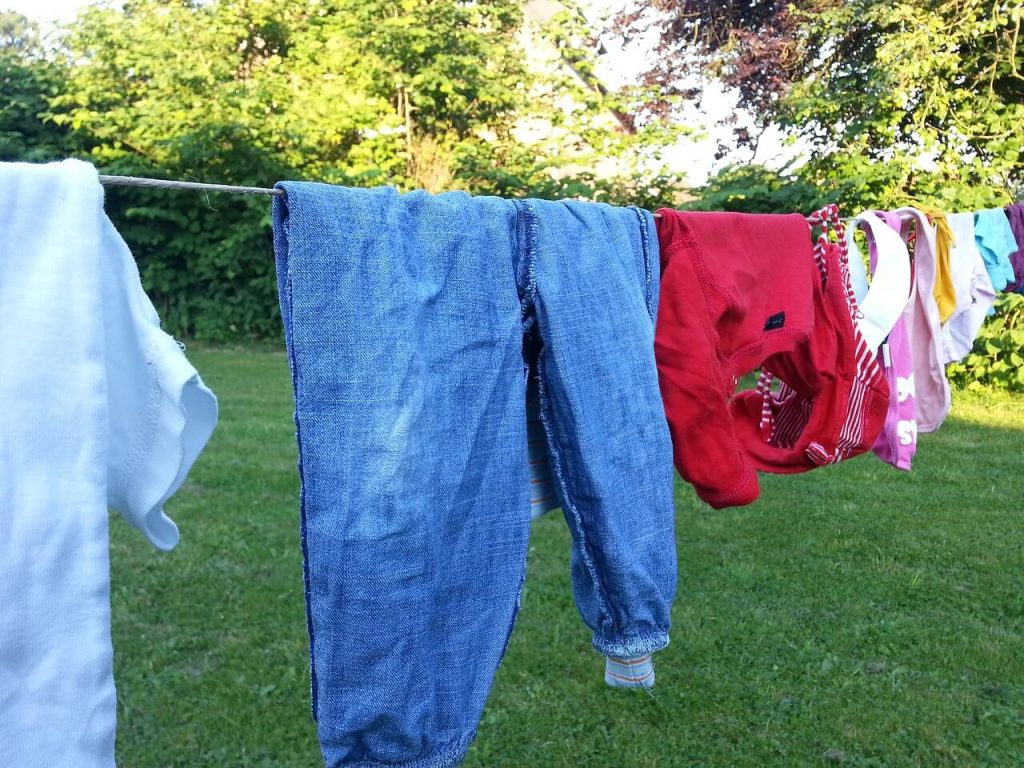
Air drying clothes has good and bad points, let’s start with the good points.
The Benefits
The main benefits of air drying laundry include;
- There’s no cost involved
Air drying clothes means you don’t have to buy an expensive tumble dryer or pay for electricity. All you need to do is hang your laundry on the washing line or clothes airer. - There’s no noise
Air drying clothes is a silent task, unlike tumble dryers which seem to make a huge amount of noise. What with the tumbling and vibration and fan noise. - There’s no damage
The only possibility of causing damage to laundry on a clothesline is if the pegs stretch the edge of the fabric. Tumble dryers have the potential to rip clothes as they get roughly twisted and turned. - There’s less chance of wrinkles
Clothes hung on a line or laid flat on a rack are less likely to become wrinkled. In fact, many creases are likely to fall out on the line due to the weight of the fabric. Tumble dryers on the other hand, can actually cause clothes to become wrinkled and creased in the drum. - It’s environmentally friendly
Air drying uses no energy and is therefore far less damaging to the environment than using an electrically powered tumble dryer.
The Disadvantages
The main disadvantages to air drying laundry include;
- Labour intensive
Every item of laundry has to be hung up by hand, done properly, this can be quite a bit of work. Each item needs to be shaken, spread out fully and pegged onto the line or arranged flat on the rack. Then there’s the work needed to bring the dry washing back in off the line or airer. - Takes up a lot of space
Washing lines can take up almost all of some gardens and always at just the time of year when you want to use the garden too. Drying racks or airers also take up the best part of a room and they need somewhere to be stored when not in use. - Takes a long while
Depending on the climatic conditions, air drying clothes can be a lengthy affair. Most items can be tumble dried in a relatively short time span. - Laundry can dry feeling rough
Certain items like towels can feel rough and hard after line drying. This is because there is no agitation like there is in a tumble dryer. Which causes the fibres to loosen. - Can cause moisture problems
Using a dryer rack or clothes airer indoors can cause your home to become damper. This can lead to mould forming which has implications for your health.
What Are The Pros & Cons Of Tumble Drying Laundry?
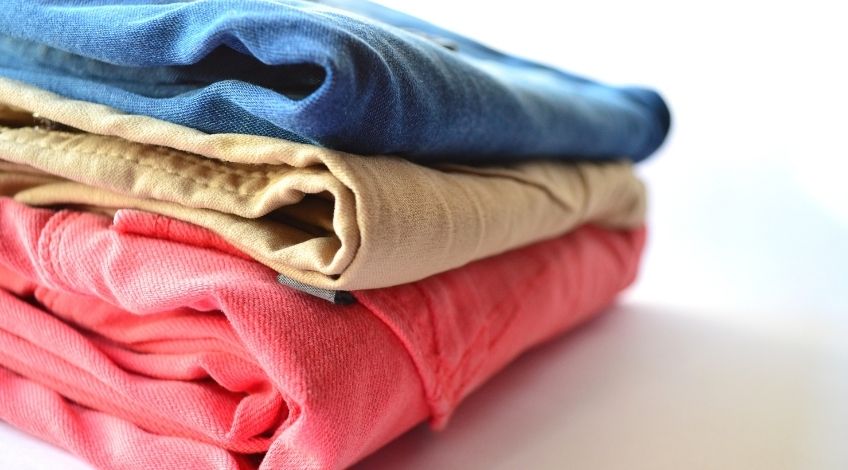
There are good and bad points to using a tumble dryer to dry your clothes.
The Benefits
The main benefits to using a tumble dryer to get your laundry dry include;
- Speed
On average, it takes around two hours to dry a full load of laundry. That same load could take anywhere from 12 to 24 hours to air dry (depending on the weather). - Convenience
In most homes, the washing machine and tumble dryer are situated in the same room. This means it’s easy to take the clothes straight from the washing machine and place them in the dryer. Once in the dryer all you need to do is select the setting, press start and walk away. - Softens garments
The rough and tumble action of your tumble dryer ensures that all of the clothes get not only dry, but softened as well. As the garments collide in the drum, they get any hard patches knocked out of them. This leaves them feeling soft. - Specialised settings
Tumble dryers have settings designed for particular items including delicates, bedding, sportswear etc. Selecting the correct setting can save time and also ensure that the items get the correct amount of heat and agitation. - Occupies less space
On the face of it, a tumble dryer is quite a large, bulky appliance. But when you consider just how much space a washing line or clothes airer takes up, you’ll see that the tumble dryer sitting against the wall takes up less room.
The Disadvantages
The main disadvantages of tumble drying your laundry include;
- The cost of energy
Obviously, compared to air drying, running a tumble dryer uses a lot of energy. That energy costs more and more every week of late which means getting your laundry dry is going to cost more and more every time you use the dryer. - Doesn’t dry laundry uniformly
The problem here is that tumble dryers have sensors that detect when clothes are dry. If the sensor picks up on a few dry items at the top of the load, the dryer assumes that the load is dry and shuts down. Many of the items towards the middle of the pile could potentially still be soaking wet. - Can cause static
As the items rub together in the drum as it spins, it can cause a static charge. This is particularly true of synthetic or blended fabrics. - Can damage clothes
When clothes become overly dry, they can become shrunken, ripped or torn. - Can cause creases & wrinkles
The heat created in a tumble dryer should in theory reduce the likelihood of creases or wrinkles forming. However, the twisting and turning of the drum can cause garments to become wrinkled. - Bad for the environment
Using a tumble dryer uses electricity which of course is not the most environmentally friendly thing to do. Especially when compared with air drying your laundry. - Noisy
There’s no escaping the fact that tumble dryers are noisy. The noise of the fan combined with the vibrational noises created by the dryer can be enough to drown out normal conversation.
So What’s Better: Air Drying Or Tumble Drying?
Basically, the right option for you depends on a number of factors, which include;
How Much Time You Have
It takes longer to hang all of your laundry on a washing line and bring it all in again compared to the amount of time it takes to fill the drum of the tumble dryer. Using a dryer will also get your clothes dryer far quicker than air drying.
How Much Space You Have
Washing lines and/or airers take up substantially more space than a tumble dryer which can often be stacked on top of the washing machine.
This makes it more convenient to transfer wet laundry directly into the dryer.
Your Budget
A tumble dryer costs far more than a washing line or clothes airer. This means the initial costs are more for purchasing a tumble dryer compared to a clothesline or drying rack.
Added to which are the running costs, a tumble dryer consumes electricity every time it is used. Whereas a clothesline costs nothing to run.
The Weather
There are climatic conditions to consider when using a clothesline outdoors. Obviously you can’t dry clothes very well in rain, snow or very humid conditions.
If you decide to air dry your laundry indoors under such weather conditions it could lead to dampness and all of the problems associated with that.
Tips On Using A Tumble Dryer
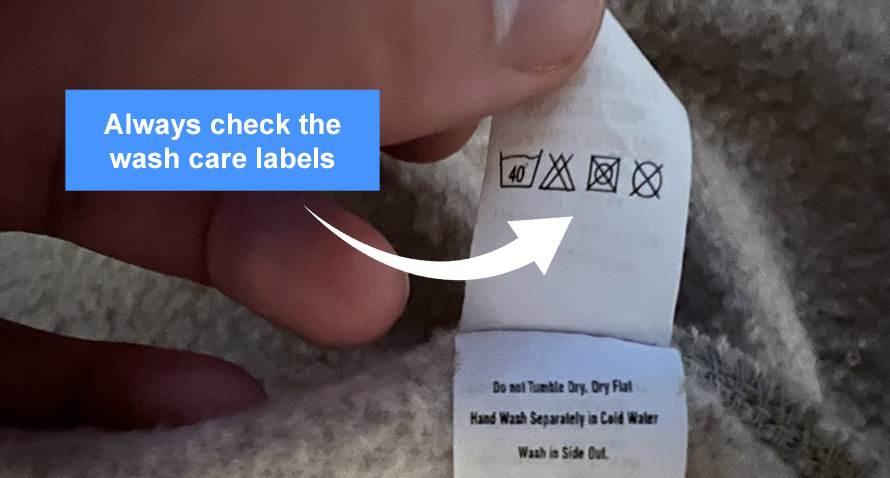
If you’re new to tumble drying or haven’t used one for a long while, here are a few helpful hints;
Always Spin Clothes First
Clothes will always be extremely wet after washing and although many wash cycles end with a spin cycle, it’s always worth checking. Obviously clothes that have been spun already will dry faster than soaking wet clothes.
Always Check The Care Label
Clothes manufacturers put care labels on their clothes because they want them to last. You should always check the care label to ensure that the item can be tumble dried and which heat setting should be used.
Always Select The Correct Setting
Hand in hand with the above tip, is always choose the right cycle when tumble drying your clothes. For instance, many dryers will have a delicate cycle which should be used for drying delicate items etc.
Check The Lint Filter Regularly
The lint filter can get surprisingly full after just one drying cycle. To help prolong the life of your dryer and to ensure it is running efficiently, you should clean the lint filter after every use.
What About Electric Clothes Airers?
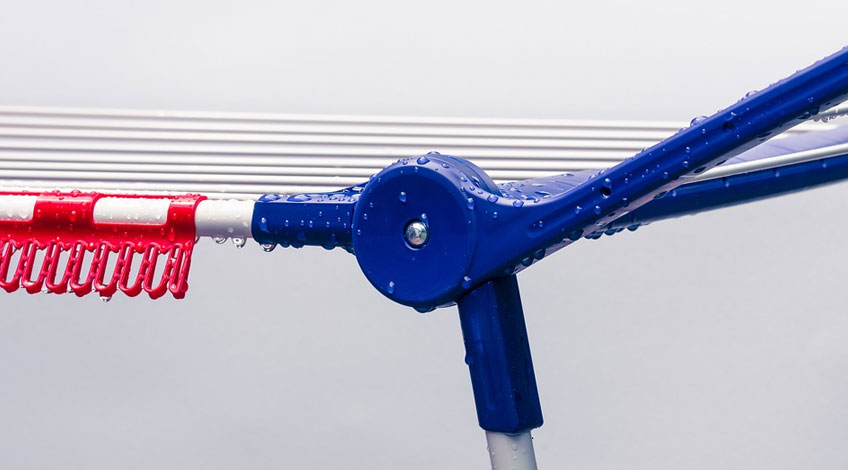
Electric clothes airers or heated airers are similar in design to standard clothes airers except they have an electric element that heats up the bars of the rack.
Many come with a cover to contain the heat but those that don’t can be covered with a bed sheet to achieve a similar result. They do use electricity but at a lower rate than a tumble dryer.
Heated airers are far less expensive than a tumble dryer but do cost more than a standard (non-heated) airer. They’re perfect if you can’t afford or don’t want to tumble dry your laundry but live in an area where the weather is not often suitable for drying clothes outdoors.
Are They Better Than Tumble Dryers?
An electric heated airer is a more environmentally friendly way to get your laundry dry in areas where inclement weather outweighs good, drying days.
Heated airers are likely to cause areas of dampness in your home but this can be counteracted by using a dehumidifier in conjunction with the heated airer.
However, a heated airer will use more energy than regular air drying which uses no energy at all. Having said that, it works out around 50% cheaper to use a heated airer compared to a tumble dryer.
SEE ALSO: Does The Tumble Dryer Shrink Clothes?
Frequently Asked Questions
Even though it takes far longer to dry clothes using a heated airer compared to a tumble dryer, it will use around half of the electricity. This makes it far better value to use a heated airer compared with a tumble dryer.
Towels get stiff after air drying because there is a small amount of water stuck in the fibres that cements the fibres together making them feel stiff. In a tumble dryer, the towels receive a rougher treatment that literally bashes that moisture out of the fibres leaving the towels feeling softer.
Using a heated airer is likely to cause dampness in your home. You can combat this by using a dehumidifier in conjunction with the heated airer.
Also, follow us on Pinterest ...

